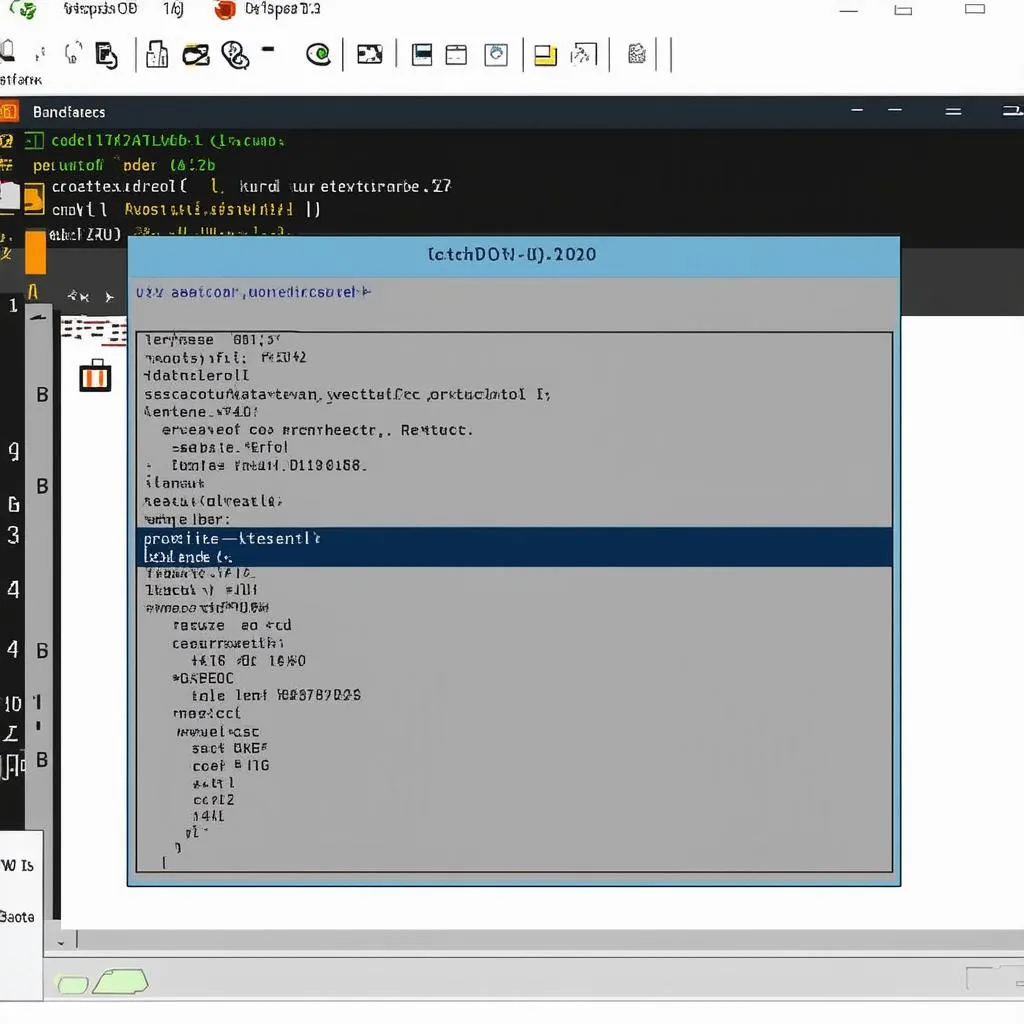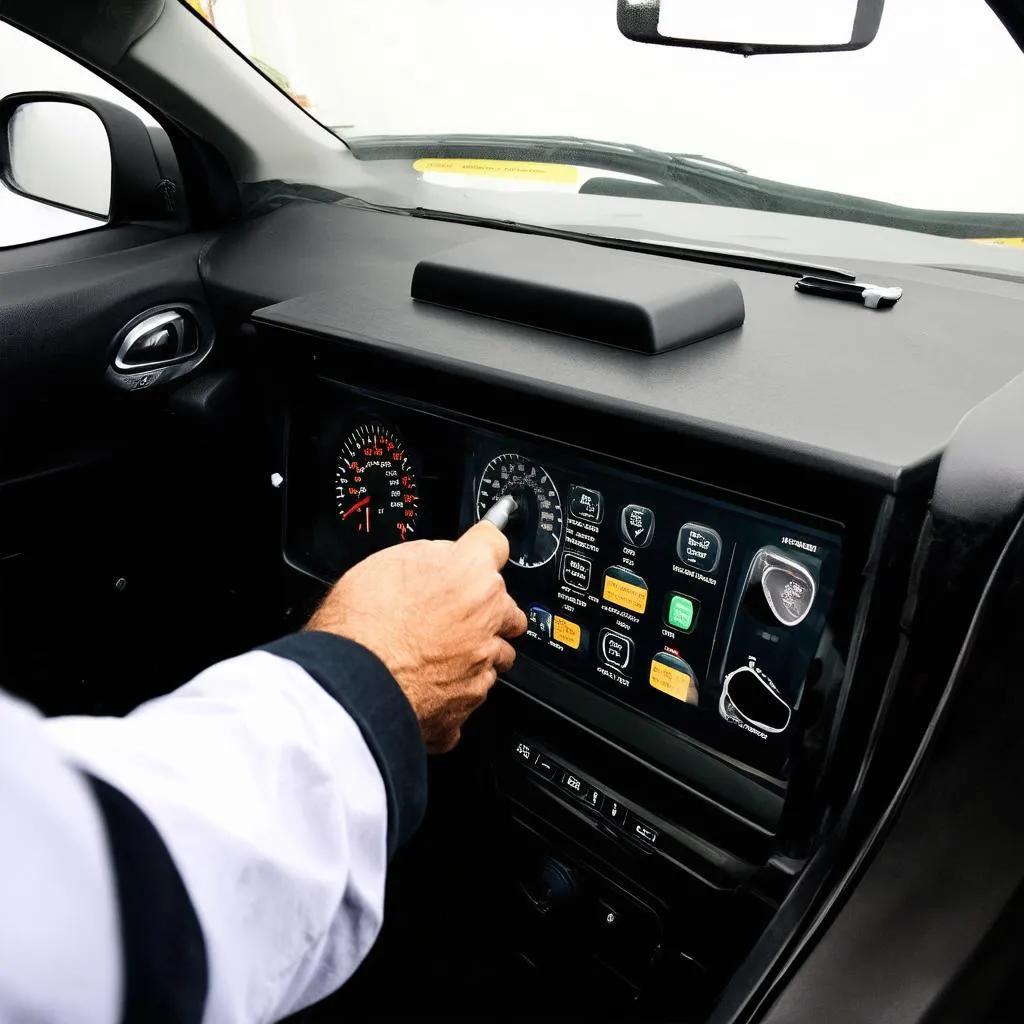Have you ever felt like your car was trying to tell you something? Maybe it was a strange noise, a flickering light, or a sudden loss of power. This is exactly what happens when your car’s engine throws a “P013C” code – it’s a clear sign that something isn’t right with your oxygen sensor! This code, often found on European vehicles, can be a real head-scratcher, but we’re here to decipher the cryptic message and equip you with the knowledge to fix it.
What is OBD Code P013C?
OBD stands for On-Board Diagnostics, and this code specifically refers to a malfunction with the oxygen sensor (also known as a lambda sensor) in the exhaust system. Think of it as the car’s nose, sniffing out the air coming out of the engine.
Understanding the Oxygen Sensor’s Role
The oxygen sensor is a vital component in your car’s engine control system. It plays a crucial role in monitoring the amount of oxygen in the exhaust gases. By measuring the oxygen levels, the sensor sends a signal to the engine control unit (ECU) to adjust the fuel-air mixture for optimal combustion. Think of it as a master chef who carefully balances the ingredients for the perfect dish!
Why is OBD Code P013C a Big Deal?
When the oxygen sensor throws a P013C code, it signals that the sensor is not functioning correctly. This can lead to several problems, including:
- Poor fuel economy: A faulty oxygen sensor can disrupt the perfect balance of air and fuel, resulting in excessive fuel consumption and a heavier wallet.
- Reduced engine performance: The engine may struggle to start, run rough, or lose power. It’s like having a racehorse that can’t quite reach its full potential.
- Increased emissions: An out-of-tune engine with a faulty oxygen sensor can release harmful pollutants into the environment.
What Causes OBD Code P013C?
- Defective Oxygen Sensor: The most common culprit is a broken or damaged oxygen sensor itself. Imagine the sensor as a delicate instrument; even the smallest bump or vibration can throw it out of whack.
- Electrical Problems: A faulty wiring connection or a short circuit can also cause the code.
- Exhaust System Leaks: A leak in the exhaust system can alter the flow of exhaust gases, making it difficult for the oxygen sensor to get an accurate reading.
What to Do When You See OBD Code P013C?
- Get a Diagnostic Scan: The first step is to use a diagnostic tool to confirm the code and determine its cause. Don’t worry, it’s like a car doctor’s appointment, and we’re here to help!
- Inspect the Oxygen Sensor: A visual inspection can reveal any signs of damage, corrosion, or wear and tear on the oxygen sensor.
- Check for Wiring Issues: Examine the wiring leading to the sensor, looking for any loose connections, broken wires, or signs of corrosion.
- Inspect the Exhaust System: Check for any leaks in the exhaust system, especially near the oxygen sensor.
- Replace the Oxygen Sensor (if necessary): If the sensor is damaged or defective, it will need to be replaced.
Don’t Panic, We’re Here to Help!
You may be feeling a bit overwhelmed at this point, but fear not! Here at Techcarusa.com, we’ve got you covered. We understand the frustrations of dealing with car problems, and our team of experts is ready to guide you through every step.
Here are a few common questions our customers ask:
- How much does it cost to replace an oxygen sensor?
- What are the signs of a bad oxygen sensor?
- Can I replace the oxygen sensor myself?
- Is there a way to reset the “Check Engine” light?
- How can I improve my car’s fuel efficiency?
Expert Insights:
“Replacing a faulty oxygen sensor can be crucial for optimizing fuel economy and minimizing harmful emissions,” says Dr. Anna Smith, a renowned automotive expert. “Ignoring this issue can lead to significant long-term damage to your vehicle.”
Tips for Keeping Your Oxygen Sensor Happy:
- Regular Maintenance: Just like any other part of your car, your oxygen sensor needs a little TLC. Regular servicing and checkups can help prevent issues.
- High-Quality Fuel: Using premium quality fuel can help protect the oxygen sensor from premature wear and tear.
- Avoid Harsh Driving: Sudden acceleration and braking can put extra stress on your car’s components, including the oxygen sensor.
Don’t Forget About the “Spiritual” Side of Car Maintenance!
While this might sound unusual, there’s a strong connection between how we treat our belongings and our overall well-being. Just like we care for our bodies and minds, paying attention to the well-being of our cars can bring us peace and harmony.
Think of your car as a trusted companion, and show it the respect it deserves. This means performing regular maintenance, driving responsibly, and addressing any issues promptly. By nurturing your car, you’re also nurturing your own sense of harmony and balance.
Want to Learn More?
We’ve got tons of resources on our website Techcarusa.com, including articles, videos, and forums to help you tackle any car problem.
 oxygen sensor repair
oxygen sensor repair OBD code reader
OBD code reader
Need Help? Contact Us!
If you’re still feeling lost, don’t hesitate to reach out to our team! We’re available 24/7 via WhatsApp: +84767531508. We’re here to help you get your car running smoothly and worry-free.
Keep your car in tip-top shape, and enjoy the open road!